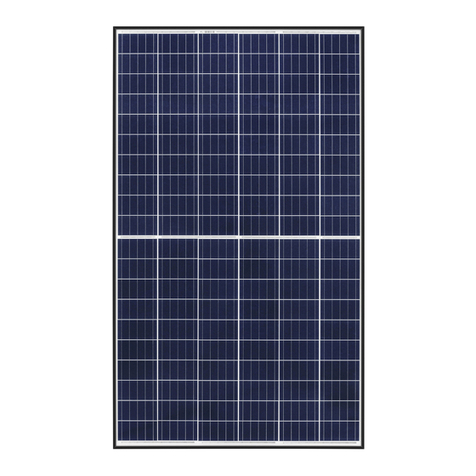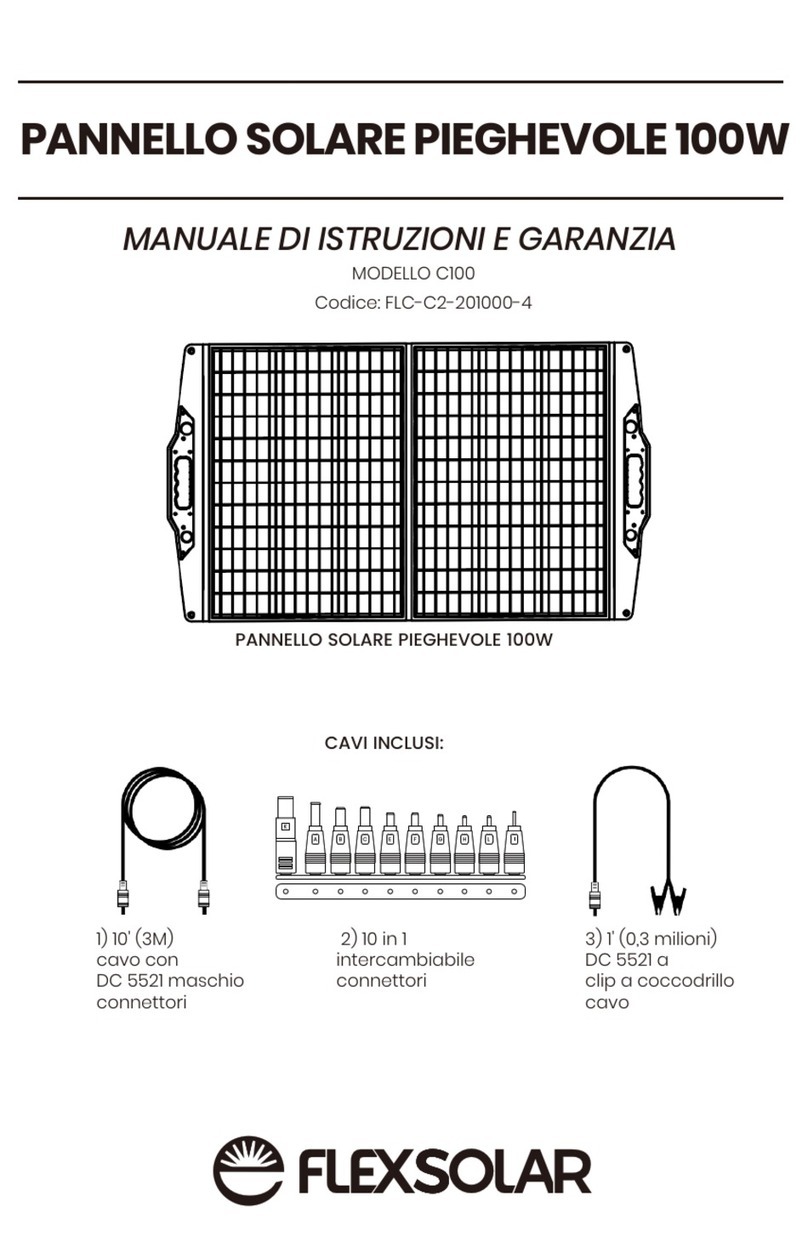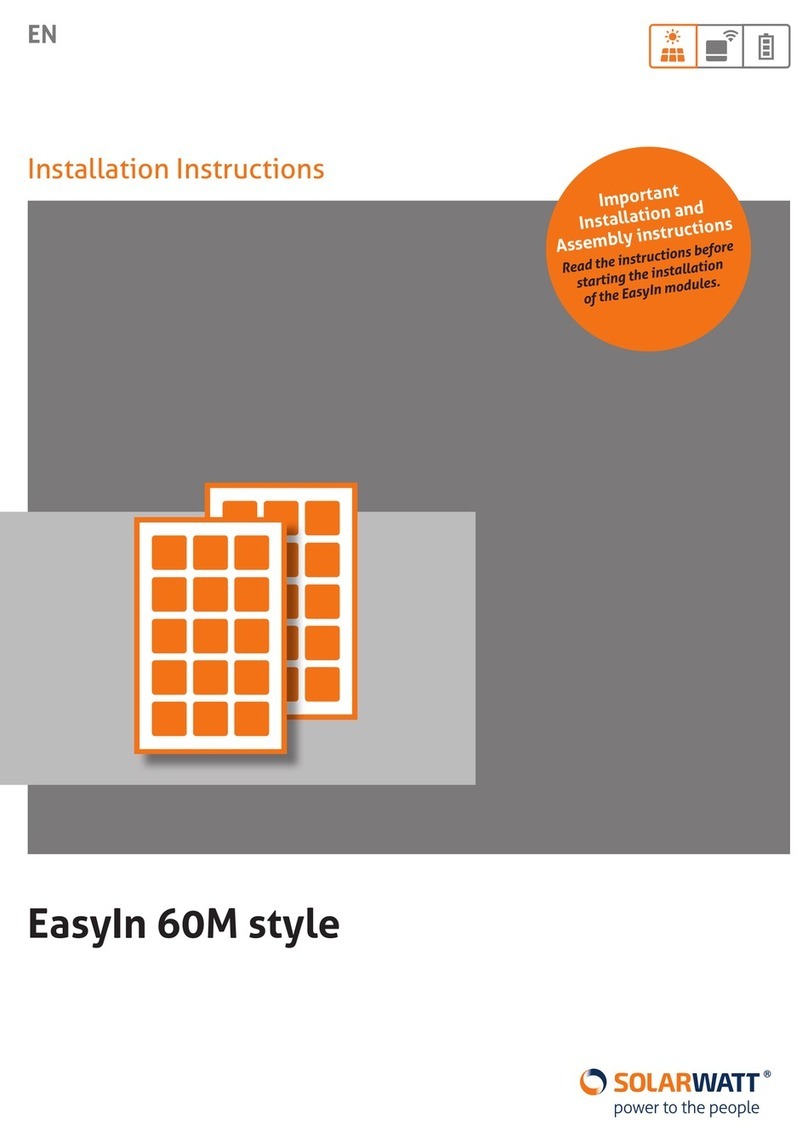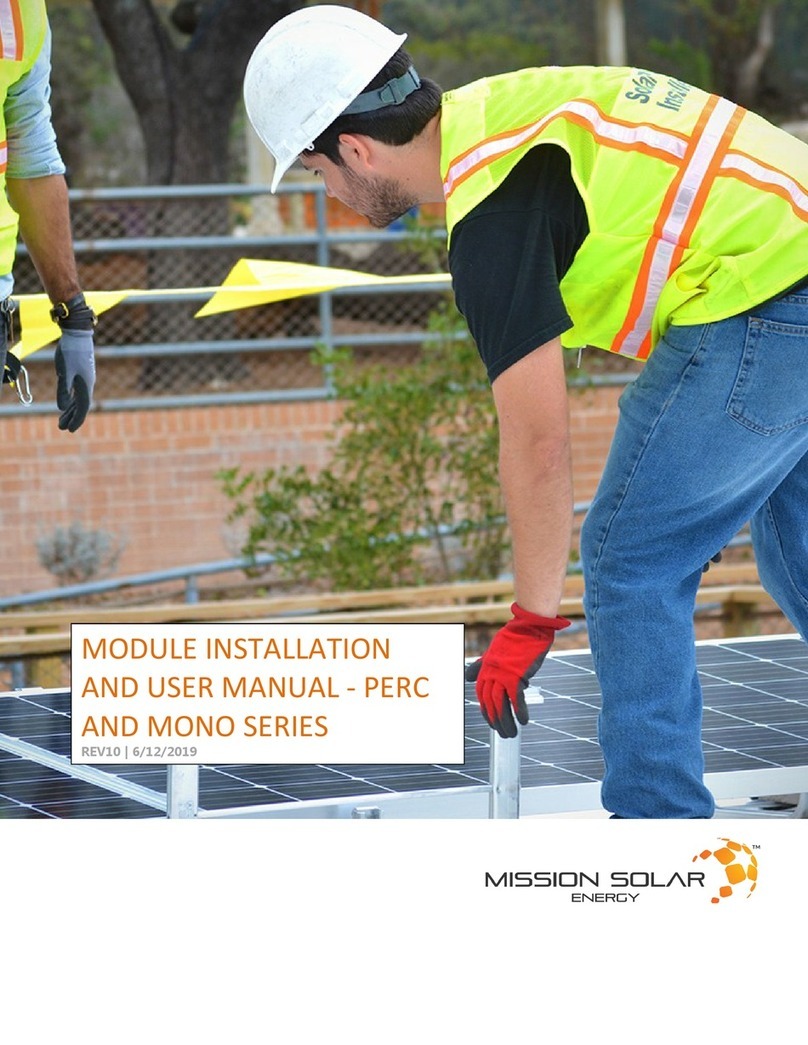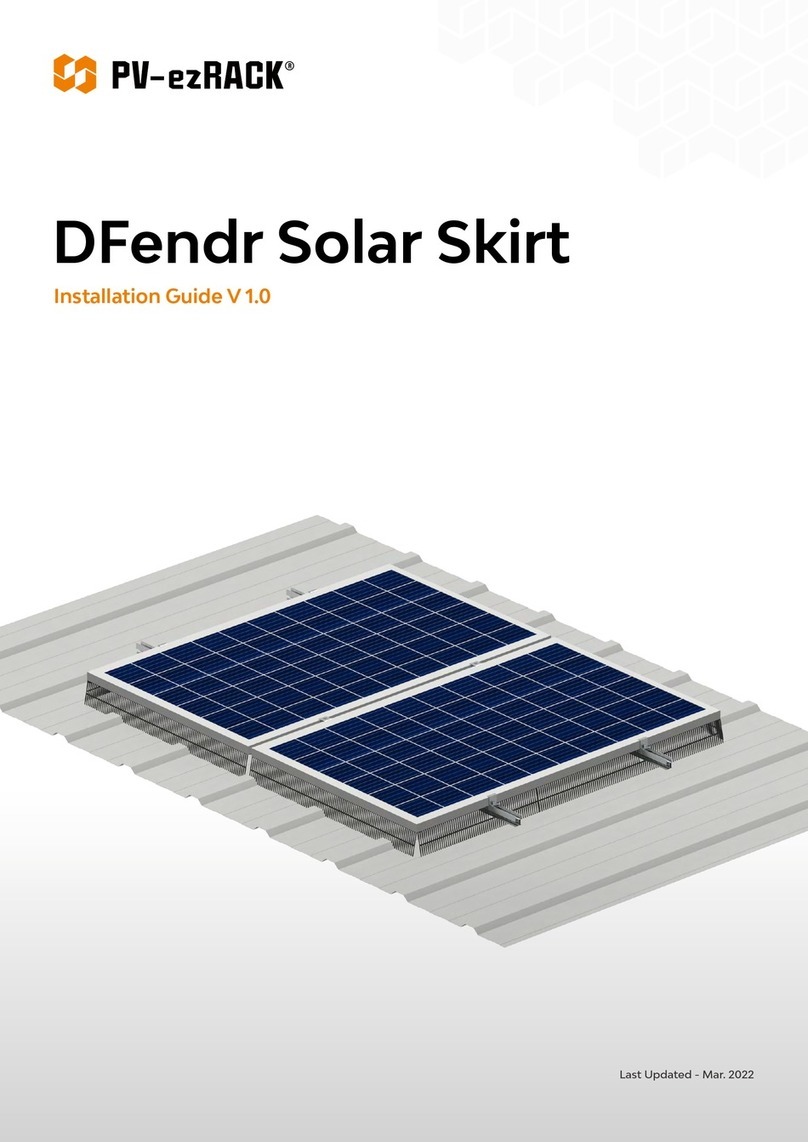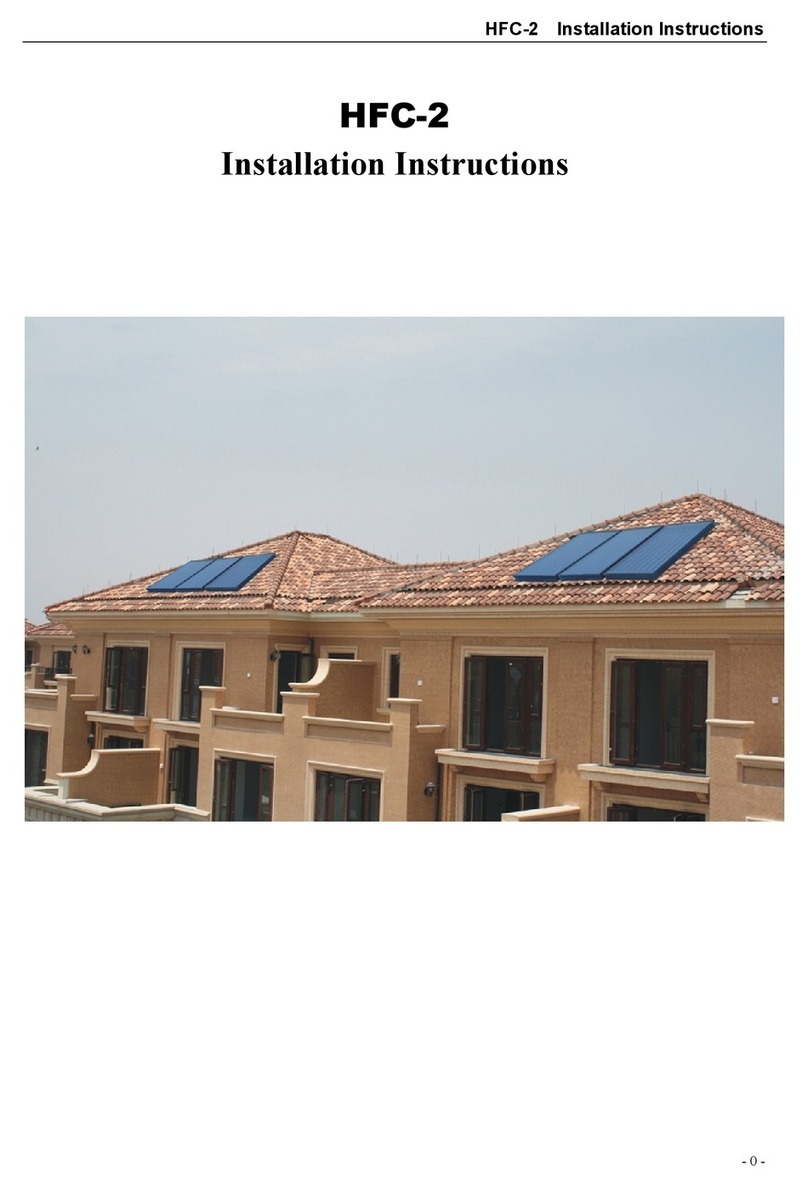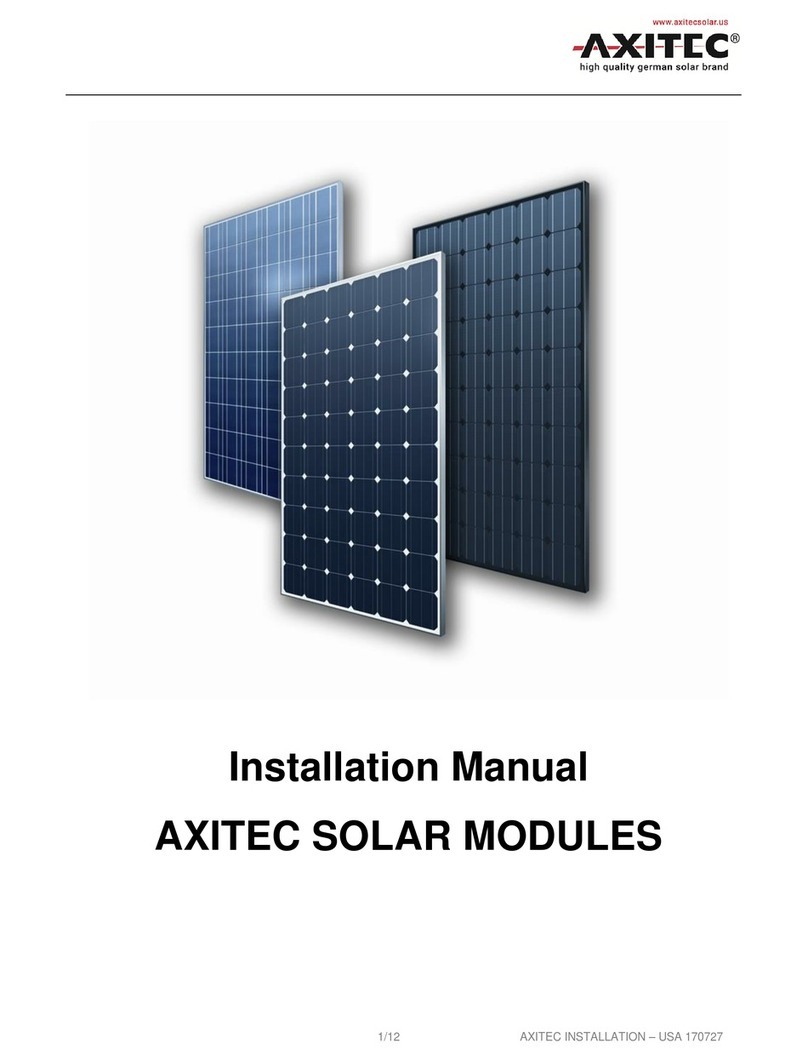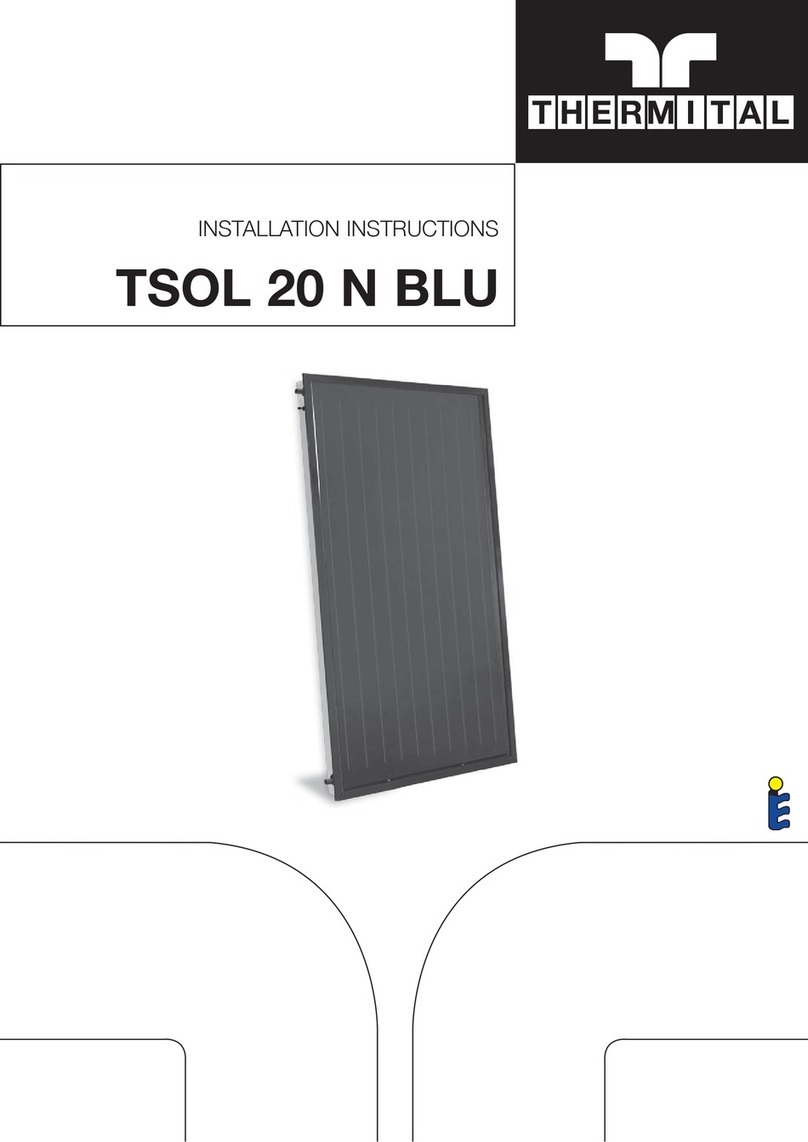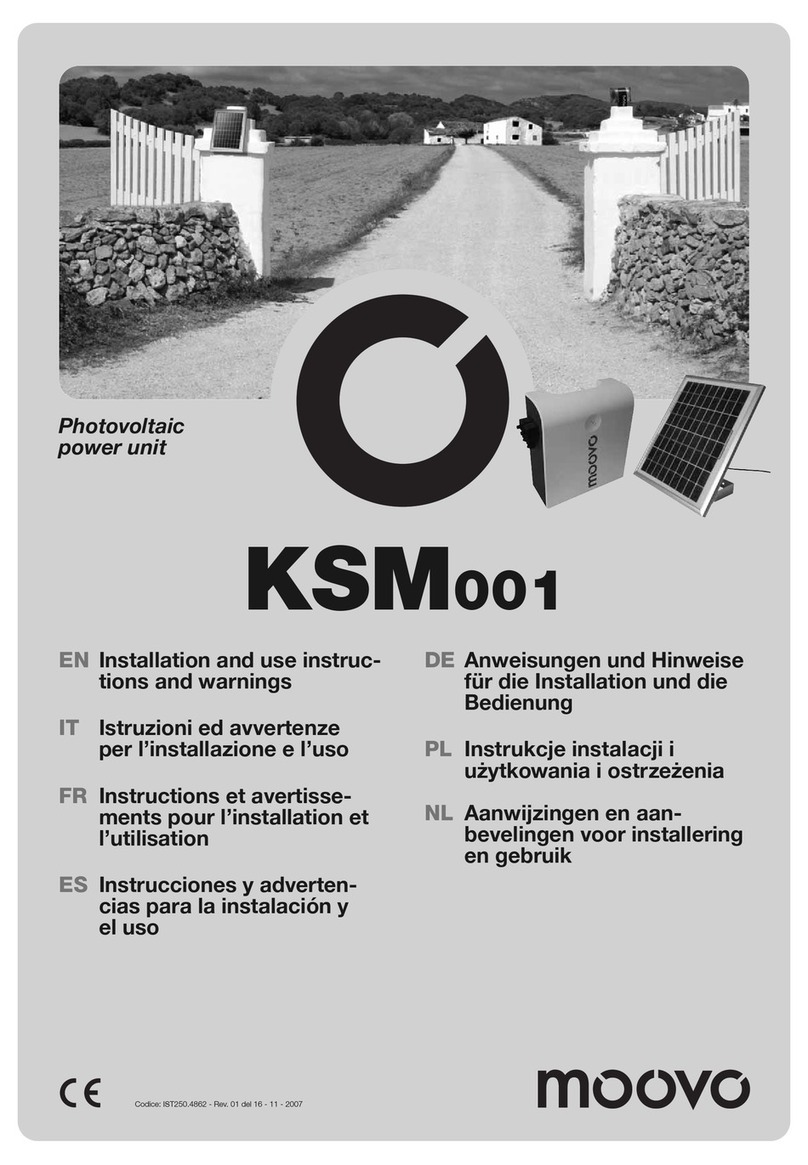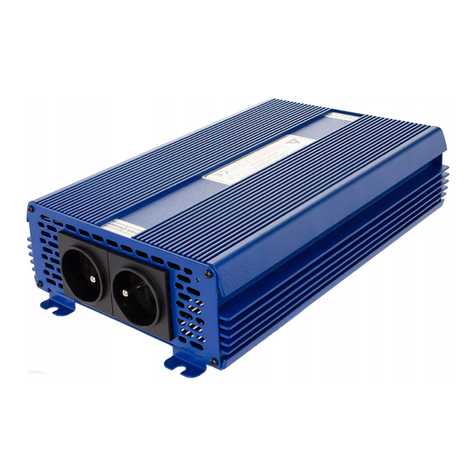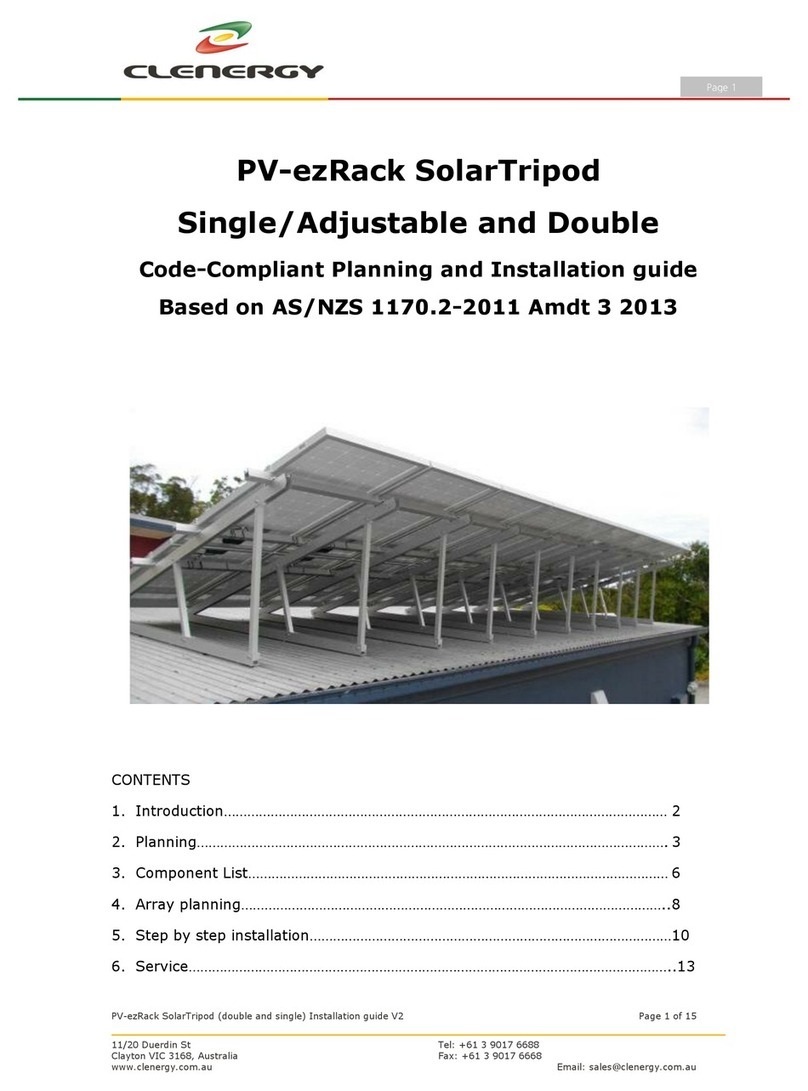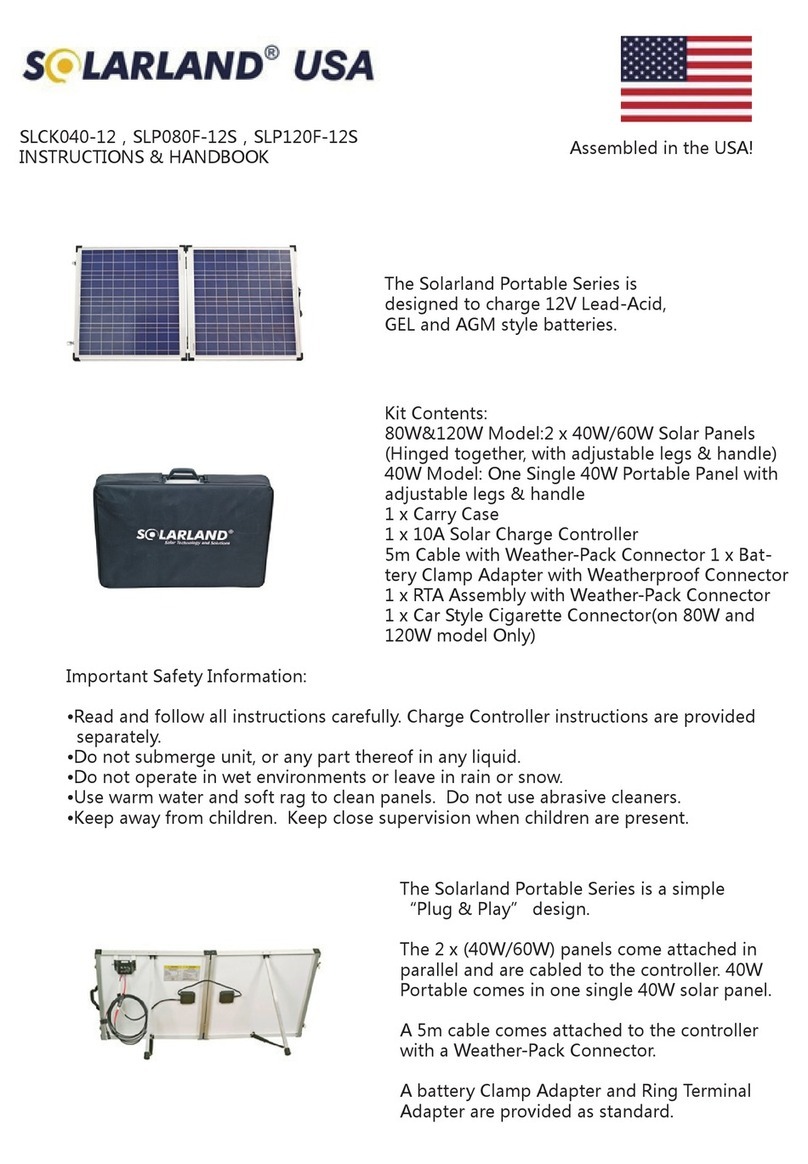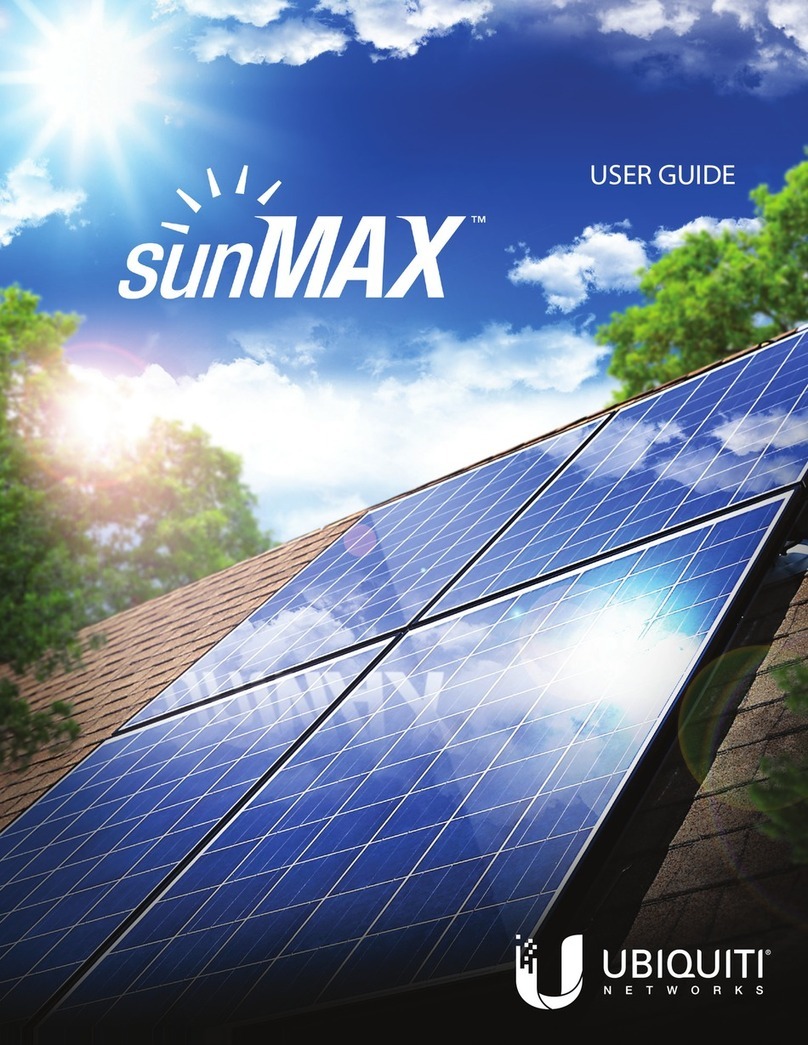
EN
Made by ETT Distribution GmbH, Schmalbachstraße 16, 38112 Braunschweig
Reprinting or reproduction only with express permission.
Item number: 1480029
Status: 08/2023
Safety during installation
• Never disconnect electrical connections or unplug
connectors while the circuit is under load.
• Contact with electrically active parts of the modules,
such as terminals, can cause burns, sparks, and fatal
shocks, whether the module is connected or not.
• Do not touch the PV module unnecessarily during
installation. The glass surface and frame may be hot;
there is a risk of burns and electric shocks.
• Do not work in the rain, snow or wind.
• Avoid exposing cables and connectors to direct sunlight
and scratches or cuts to prevent insulation deterioration.
• Use only insulated tools approved for work on
electrical equipment.
• Keep children away from the system during transport and
installation of mechanical and electrical components.
• Cover the module completely with an opaque material
during installation to prevent electricity from
being generated.
• Do not wear metallic rings, bracelets, earrings, nose rings,
lip rings or other metallic objects during installation or
troubleshooting of photovoltaic systems.
• Follow safety regulations (e.g., safety regulations for work
on electrical power plants) for your region and for all other
system components, including wires and cables,
connectors, charge controllers, inverters, batteries,
accumulators, etc.
• Under normal conditions, it is likely that a photovoltaic
module will be exposed to conditions that produce a
higher current and/or voltage than specied in the
standard test conditions. Accordingly, the Isc and Voc
values specied on this module should be multiplied by a
factor of 1.25 when determining component voltage values,
conductor current values, minimum fuse size factor, and
the size of controls connected to the PV output.
• Use only the same connectors to connect modules into a
string or to connect to another device. Removing the
connectors will void the warranty.
Fire Safety
• Check with your local authority for guidelines and
requirements for structural re safety.
• Roof structures and installations can affect the re safety
of a building. Improper installation can lead to hazards in
the event of a re.
• Use components such as ground fault circuit interrupters
and fuses as required by local authorities. Do not use
modules near equipment or in locations where ammable
gases may be generated.
• Modules rated for module re protection type must be
installed on a roof that has appropriate re resistance.
Before installing on the roof, contact your local building
authority to ensure that the roong materials are approved.
• A minimum slope of 12.5 cm per 30 cm is required for
installation on a roof to maintain the re rating. Each
module or panel mounting system has limitations on the
slope required to receive a specic system re rating.
MECHANICAL INSTALLATION
Selection of the location
• Select a suitable location for installing the modules.
• Modules should face south at northern latitudes and north
at southern latitudes.
• For detailed information on the best installation angle,
refer to standard photovoltaic installation manuals or
consult a reputable solar installer or system integrator.
• Modules should not be shaded at any time. If a module is
shaded or even partially shaded, it will not reach ideal
conditions, resulting in lower power output. Permanent
and/or regular shading of the module will void
the warranty.
• This installation manual applies to all PV systems located
500m or more from the coast.
• Do not use the modules near equipment or in locations
where ammable gases may be generated or collected.
Before installation
• Check for visual discrepancies before installing the
modules. Any visual discrepancy found after the system is
installed may void the warranty. Any labor, material or
other costs, such as for documentation, safety or the
performance of the (de-/ re)installation, will not be covered.
• The mounting structure of the module must be made of
durable, corrosion and UV resistant material.
• Always use a tested and certied mounting structure that
is approved for your system design.
• In regions with heavy snowfall in winter, adjust the height
of the mounting system so that the bottom edge of the
module is not covered by snow. Also, ensure that the
bottom of the module is not shaded by plants or trees or
damaged by soil moving through the air.
• For ground mounting systems, a minimum distance from
the ground to the bottom edge of the module of 60 cm is
recommended.
• Modules must be securely fastened to the mounting
structure. For clamp system installation methods, the
recommended maximum compressive force for each
clamp is 2900PSI (20 MPa) to avoid possible damage to the
module frames. Follow the clamping system
manufacturer‘s instructions.
• Ensure adequate ventilation under the modules according
to local regulations. A minimum distance of 10 cm between
the roof level and the module frame is generally
recommended.
• Always follow the instructions and safety precautions
included in the module support frames.
• Always make sure that the roof structure is suitable before
installing modules on a roof. In addition, all roof
penetrations required to mount the module must be
properly sealed to prevent leaks.
• Dust that accumulates on the surface of the module can
affect the performance of the module. Modules should be
installed with a tilt angle of at least 10 degrees so that dust
can be more easily removed by rain. If the angle is shallow,
more frequent cleaning is required.
